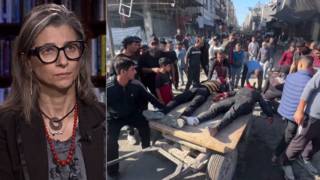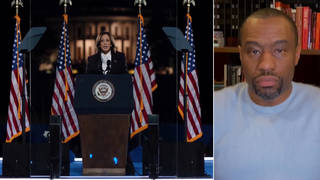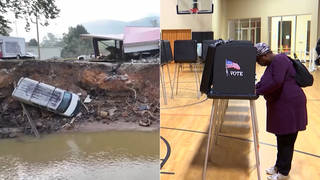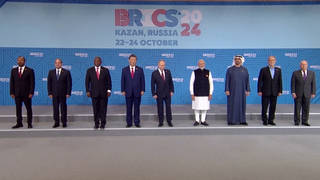
Related
Tapestry of manipulations has unraveled into Iraq civil war
“Every great work of art goes through messy phases while it is in transition. A lump of clay can become a sculpture; blobs of paint become paintings which inspire.”
No, this is not Pablo Picasso speaking, but Maj. Gen. William B. Caldwell IV, spokesman for the Multi-National Force-Iraq, comparing the carnage in Iraq to a work of art in another audacious attempt to paint Iraq as anything other than a catastrophe.
The general’s remarks do bring the great artist to mind. Picasso’s epic painting “Guernica,” named after the city in Spain, captured the brutality of the bombing of that city during another civil war, the Spanish Civil War.
The painting, almost 30 feet wide, is a globally recognized depiction and artistic condemnation of war. Picasso shows the terror on the faces of people, the frightened animals. He shows the dead, the dying, the dismembered. A tapestry reproduction of it adorns the lobby outside of the United Nations Security Council.
In February 2003, before then-U.S. Secretary of State Colin Powell gave his major push for war at the United Nations — a speech he would later call a “blot” on his record — a blue curtain was drawn across the tapestry so that the image would not be the backdrop for press statements on the coming war. Immediately, posters and banners of Picasso’s “Guernica” began appearing at the anti-war demonstrations sweeping the globe.
The attempted control of imagery and propaganda, language and spin has been a high priority of the Bush administration. Yes, the Pentagon forbade photographing the flag-draped coffins of fallen soldiers. But the manipulation goes beyond the war.
President Dwight D. Eisenhower once said, “Every gun that is made, every warship launched, every rocket fired, signifies, in the final sense, a theft from those who hunger and are not fed.” If Eisenhower worked for the government today, he would have to revise his statement. Recently, the Bush administration stopped using the words “hunger” or “hungry” when describing the millions of Americans who can’t afford to eat. Instead of suffering from hunger, the Agriculture Department now says these people are experiencing “very low food security.”
While the Bush administration has had some success in covering up the truth, it seems like reality is finally beginning to outpace its efforts.
Take, for example, Hurricane Katrina. A side effect of the Bush administration not responding to that disaster in a timely fashion is that when the network reporters went to New Orleans, there were no troops to embed with. What we saw for one of the first times was the network correspondents reporting from the victims’ perspective. Day after day, unspun, unfiltered. Bodies floated across our TV screens. I remember a young woman reporter interviewing a man whose wife’s hand had just slipped out of his, as she told him to take care of their children. After telling his story, the man waded into the water in shock with his boy. The reporter started to cry. The reports galvanized the country. Could you imagine if for one week we saw those images in Iraq: babies dead on the ground, women with their legs blown off by cluster bombs, soldiers dead and dying. Americans are a compassionate people. They would say no — war is not an answer to conflict in the 21st century.
The debate now in vogue is whether Iraq is in a civil war. Sectarian violence on a mass scale is acknowledged all around: Gone are the harangues that the media are not covering the “positive stories” or the “good news” — there simply is no good news in Iraq.
The Iraqi Ministry of Health estimated 150,000 Iraqis have died since the invasion. An October medical journal article estimated the civilian death toll as somewhere near 655,000.
The U.S. invasion and occupation of Iraq has now lasted longer than the U.S. involvement in World War II. Iraqis suffered the most violent day in the entire war while Americans were celebrating Thanksgiving.
Iraq, like Spain in the 1930s, is in a civil war. A civil war started by the U.S. invasion and fueled by the U.S. occupation. The shroud over the U.N.’s “Guernica” tapestry is gone. Now the only shrouds worth noting are those that wrap the victims of the daily slaughter in Iraq.
Amy Goodman is the host of “Democracy Now,” which airs in Tucson on radio station KXCI (91.3-FM) and Access Tucson. For broadcast times and to e-mail Goodman, go to www.democracynow.org











